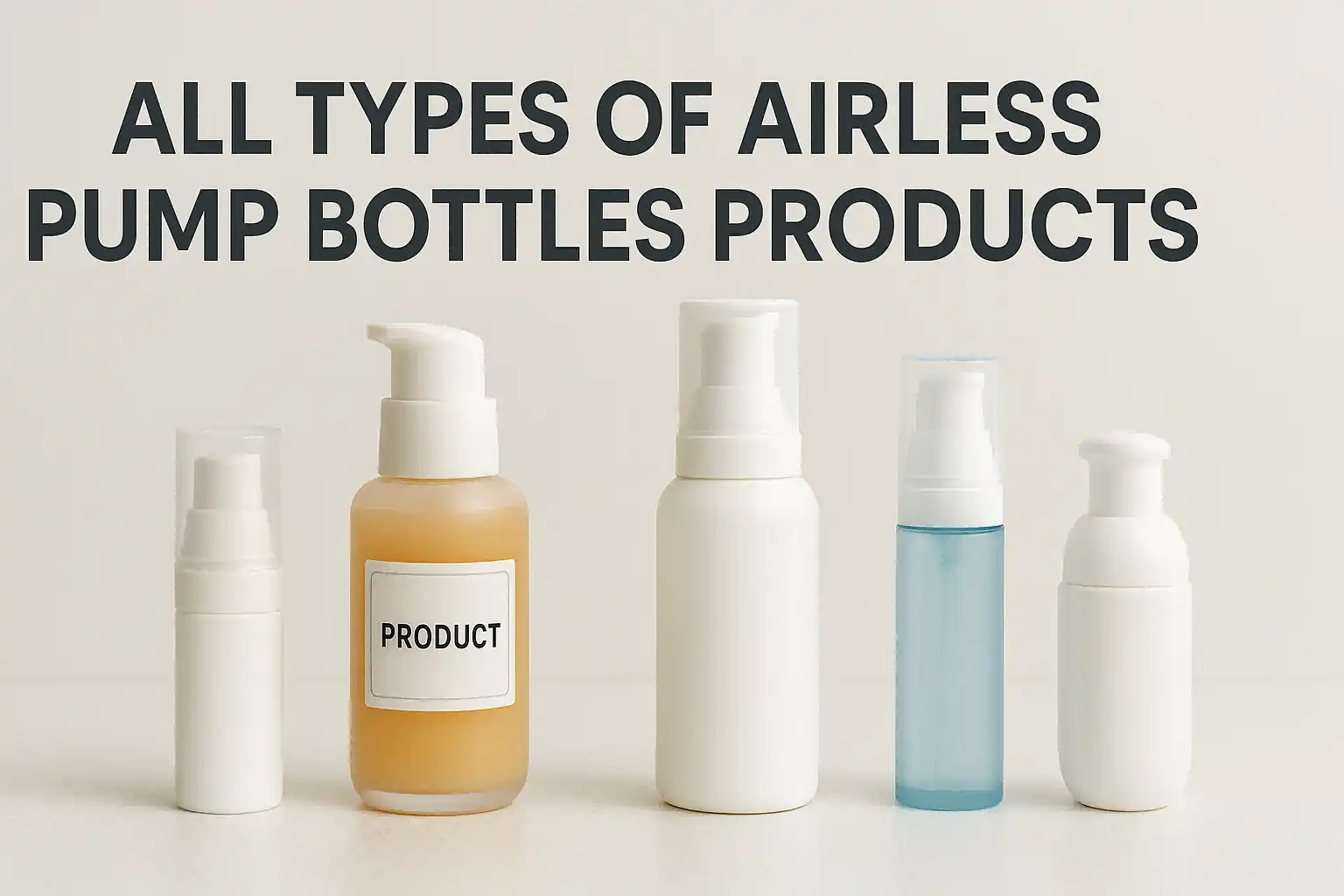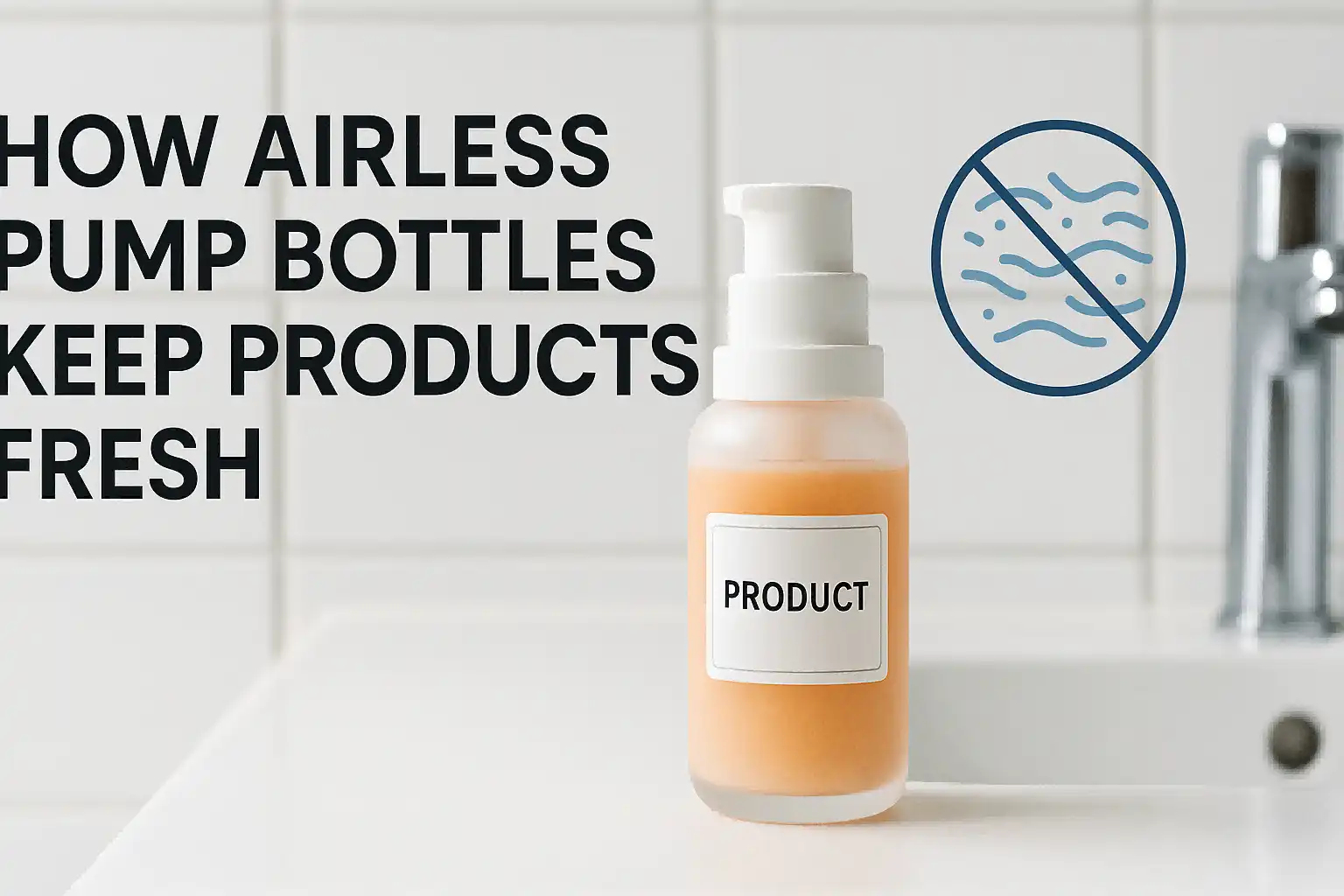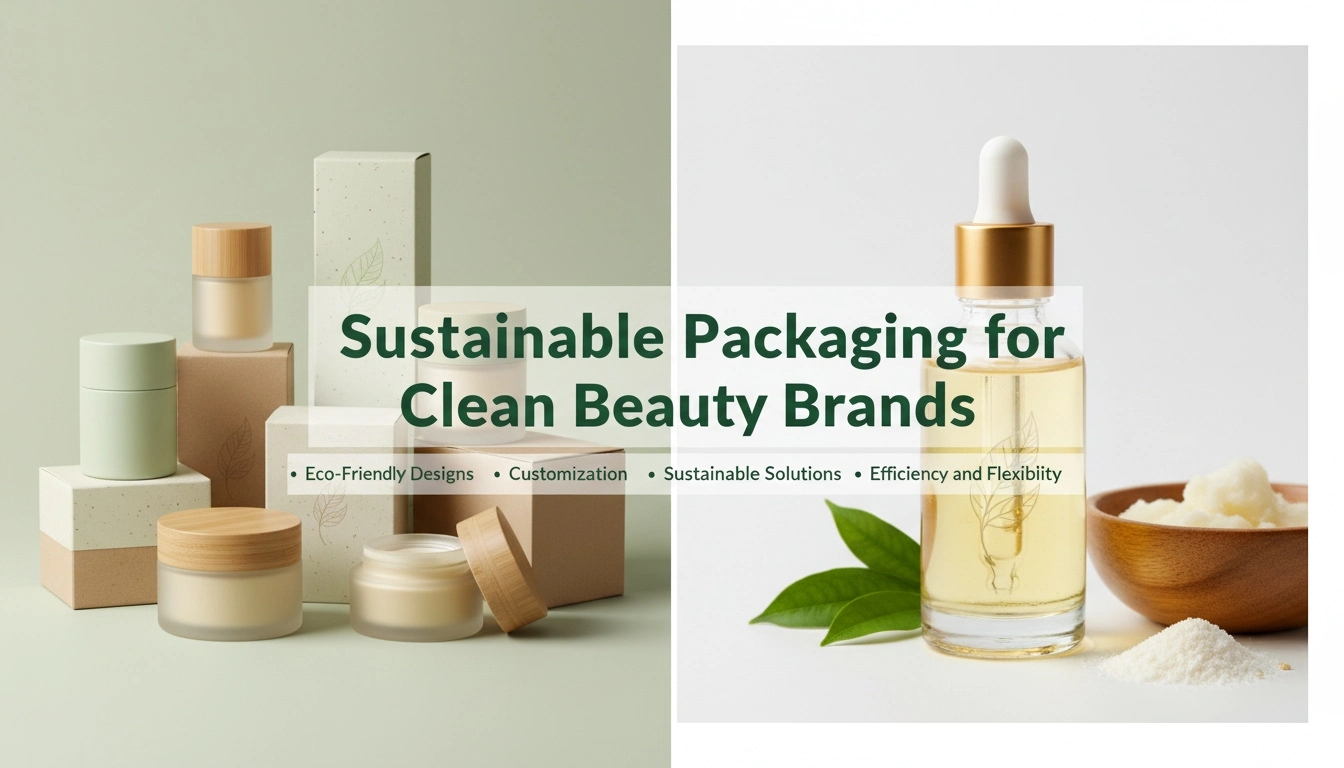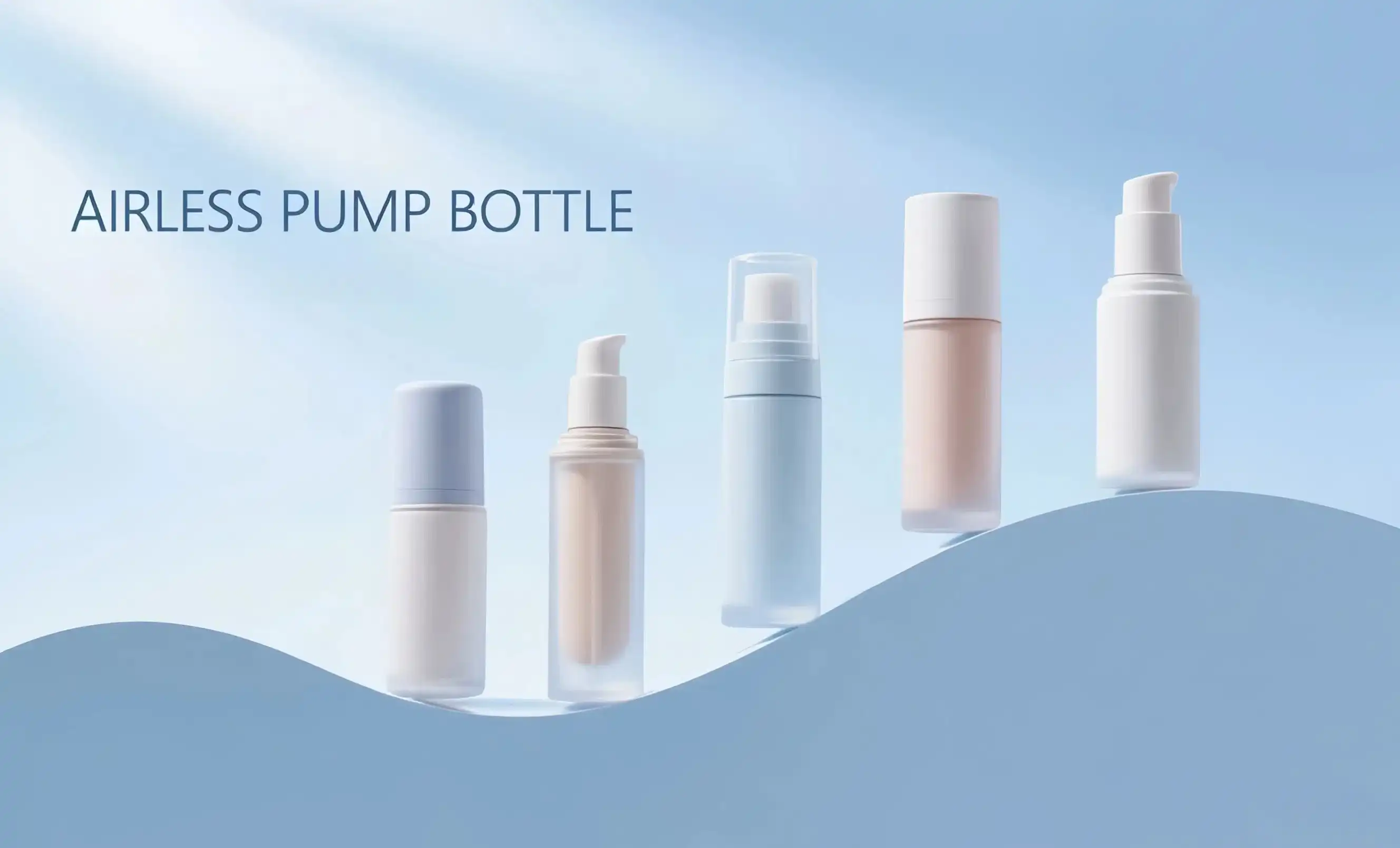Do Airless Pump Bottles Work with All Types of Products?
One of the most common questions regarding airless pump bottles is their compatibility with various product formulations. While these containers are highly versatile, it's important to understand their strengths and limitations.
Ideal Products for Airless Pump Bottles
Airless pump bottles excel at dispensing a wide range of viscosities, making them suitable for numerous beauty and skincare products. They work exceptionally well with:
- Serums and lightweight lotions
- Liquid foundations and tinted moisturizers
- Facial oils and emulsions
- Gel-based products
- Creams and thick moisturizers
The vacuum mechanism in airless pumps allows for precise dispensing of these products, ensuring consistent dosage and minimizing product waste.
Products That May Not Be Suitable
While airless pump bottles are versatile, some product types may not be ideal for this packaging:
- Extremely thick or paste-like formulations
- Products with large particles or exfoliants
- Formulas that require shaking before use
- Extremely volatile or quick-evaporating liquids
For these product types, alternative packaging solutions might be more appropriate to ensure optimal performance and user experience.
Considerations for Product Compatibility
When determining if an airless pump bottle is suitable for your product, consider the following factors:
- Viscosity: Ensure the product can flow smoothly through the pump mechanism
- Stability: Check if the formula is affected by the slight pressure changes in airless systems
- Ingredient reactivity: Verify that the product doesn't react with the bottle materials
- Dosage requirements: Confirm that the pump can dispense the appropriate amount of product
By carefully evaluating these aspects, you can determine whether an airless pump bottle is the right choice for your specific product formulation.

How to Refill or Reuse an Airless Pump Bottle
As sustainability becomes increasingly important in the beauty industry, many consumers and brands are looking for ways to extend the life of their packaging. Refilling or reusing airless pump bottles can be an excellent way to reduce waste and maximize the value of these innovative containers.
Steps for Refilling an Airless Pump Bottle
Refilling an airless pump bottle requires care and attention to maintain its functionality. Follow these steps for best results:
- Clean the bottle thoroughly with mild soap and warm water
- Allow the bottle to dry completely
- Carefully remove the pump mechanism
- Slowly pour the new product into the bottle, avoiding air bubbles
- Replace the pump mechanism and press it down firmly
- Prime the pump by pressing it several times until the product dispenses
It's important to note that not all airless pump bottles are designed for refilling, so check the manufacturer's instructions before attempting to refill your container.
Considerations for Reusing Airless Pump Bottles
When reusing airless pump bottles, keep the following points in mind:
- Compatibility: Ensure the new product is compatible with the bottle material and previous contents
- Sanitization: Properly clean and sanitize the bottle to prevent contamination
- Pump integrity: Check that the pump mechanism is still functioning correctly
- Labeling: Remove or update labels to reflect the new contents
By following these guidelines, you can extend the life of your airless pump bottles while maintaining product quality and safety.
The Benefits of Refillable Airless Pump Bottles
Investing in refillable airless pump bottles offers several advantages:
- Reduced packaging waste
- Lower environmental impact
- Cost savings for consumers
- Potential for brand loyalty through refill programs
As we move towards more sustainable beauty practices, refillable airless pump bottles are likely to become increasingly popular among eco-conscious consumers and brands.
The Cost-Effectiveness of Airless Pump Bottles for Brands
For beauty and skincare brands, choosing the right packaging is crucial not only for product preservation but also for overall cost-effectiveness. Airless pump bottles offer several economic advantages that make them an attractive option for businesses of all sizes.
Initial Investment vs. Long-term Savings
While airless pump bottles may have a higher upfront cost compared to traditional packaging, they often lead to significant long-term savings:
- Reduced product waste due to precise dispensing
- Extended product shelf life, resulting in fewer returns and less inventory loss
- Decreased need for preservatives, potentially lowering formulation costs
- Improved customer satisfaction, leading to repeat purchases and brand loyalty
These factors contribute to a better return on investment over time, making airless pump bottles a cost-effective choice for many brands.
Customization and Branding Opportunities
Airless pump bottles offer extensive customization options, allowing brands to create unique packaging that stands out in the market:
- Various shapes and sizes to suit different product types
- Custom colors and finishes to align with brand aesthetics
- Options for decorative techniques like silk-screen printing or hot stamping
- Potential for innovative designs that enhance user experience
These customization possibilities can help brands differentiate themselves and justify premium pricing, further improving cost-effectiveness.
Operational Efficiencies
Airless pump bottles can also contribute to operational efficiencies in production and distribution:
- Simplified filling processes due to the bottle design
- Reduced risk of contamination during manufacturing
- Improved stability during shipping and storage
- Potential for automated dispensing in professional settings
These efficiencies can lead to cost savings in manufacturing, quality control, and logistics, further enhancing the overall cost-effectiveness of airless pump bottles for brands.
Sustainability Considerations
As consumers increasingly prioritize sustainable packaging, the cost-effectiveness of airless pump bottles extends to environmental factors:
- Potential for using recycled materials in bottle production
- Options for refillable designs, reducing overall packaging waste
- Improved product preservation, leading to less product waste
- Opportunities for participating in circular economy initiatives
By aligning with sustainability trends, brands can enhance their market position and potentially command higher prices, further improving the cost-effectiveness of their packaging choices.
In conclusion, airless pump bottles offer a range of benefits that make them a smart choice for beauty and skincare brands. From product preservation to customization options and operational efficiencies, these innovative containers provide value that extends far beyond their initial cost. As we continue to advance in packaging technology, airless pump bottles are likely to remain a key player in the beauty industry, offering both functional and economic advantages to brands and consumers alike.
Are you a skincare brand, makeup brand, or cosmetics manufacturer looking to elevate your packaging game? Topfeelpack specializes in advanced airless bottles designed to meet the unique needs of the beauty industry. Our commitment to sustainability, fast customization, and competitive pricing makes us the ideal partner for brands seeking innovative packaging solutions. Whether you're a high-end skincare line, a trendy makeup brand, or a DTC beauty company, we have the expertise to bring your vision to life. With our ability to deliver new products in just 30-45 days and ensure fast delivery within 3-5 weeks, we're equipped to keep pace with your rapid product launches. Plus, our airless bottles comply with all necessary environmental regulations and can be customized to fit your brand's aesthetic. Ready to explore how our airless pump bottles can benefit your brand? Contact us today at pack@topfeelgroup.com to learn more about our custom solutions and how we can support your packaging needs.
References
- Johnson, L. (2024). "The Evolution of Cosmetic Packaging: Airless Pump Technology." Journal of Packaging Innovation, 18(2), 45-62.
- Smith, A. & Brown, T. (2023). "Sustainability in Beauty: The Role of Refillable Packaging." Green Cosmetics Quarterly, 7(4), 112-128.
- Lee, S. et al. (2024). "Comparative Study of Product Shelf Life in Traditional vs. Airless Packaging." International Journal of Cosmetic Science, 46(3), 301-315.
- Garcia, M. (2025). "Consumer Perceptions of Luxury Skincare Packaging: A Focus on Airless Pumps." Beauty Marketing Review, 12(1), 78-95.
- Wong, H. & Patel, R. (2024). "Cost-Benefit Analysis of Airless Pump Bottles in the Cosmetics Industry." Journal of Beauty Business Economics, 9(2), 155-172.
- Nakamura, Y. (2025). "Advancements in Airless Pump Technology for Viscous Cosmetic Formulations." Cosmetic Engineering Today, 14(3), 210-225.


 - 副本_1745399213966.webp)

_1747827716538.webp)

